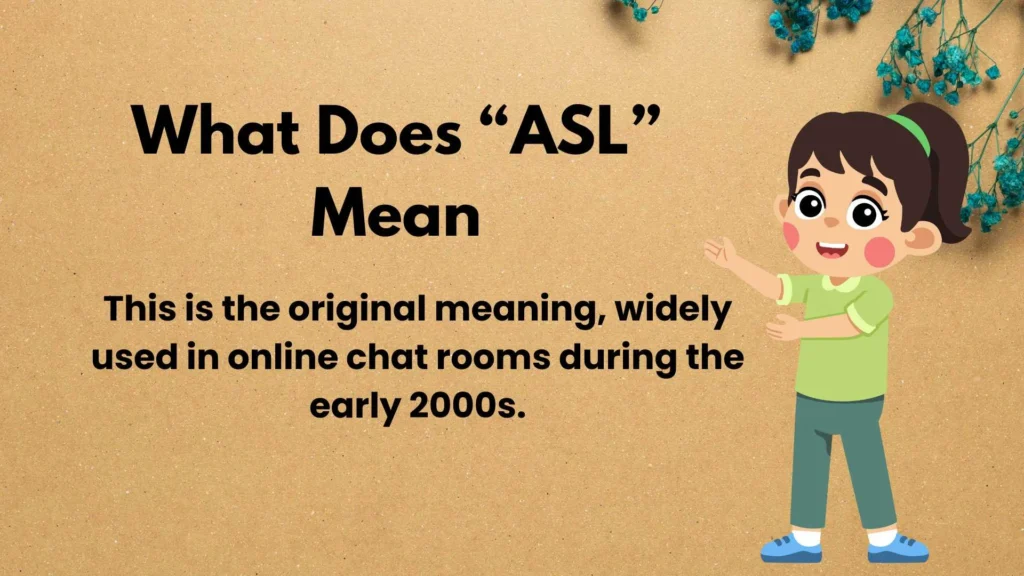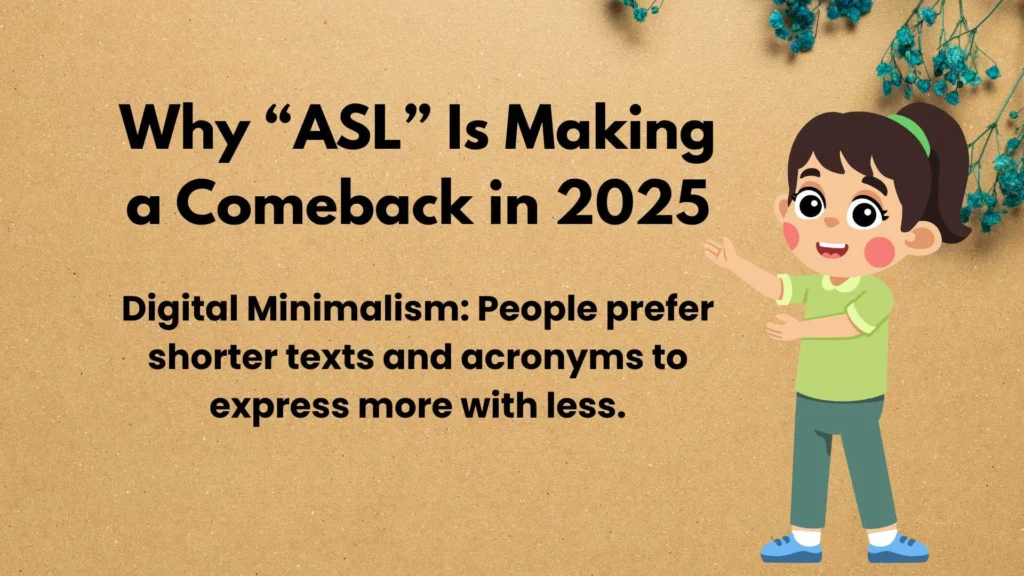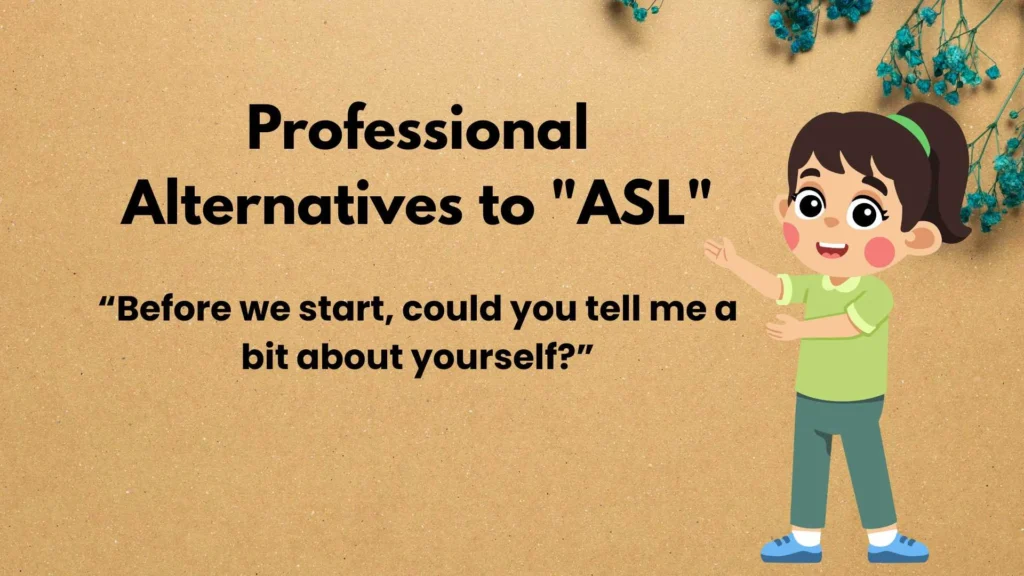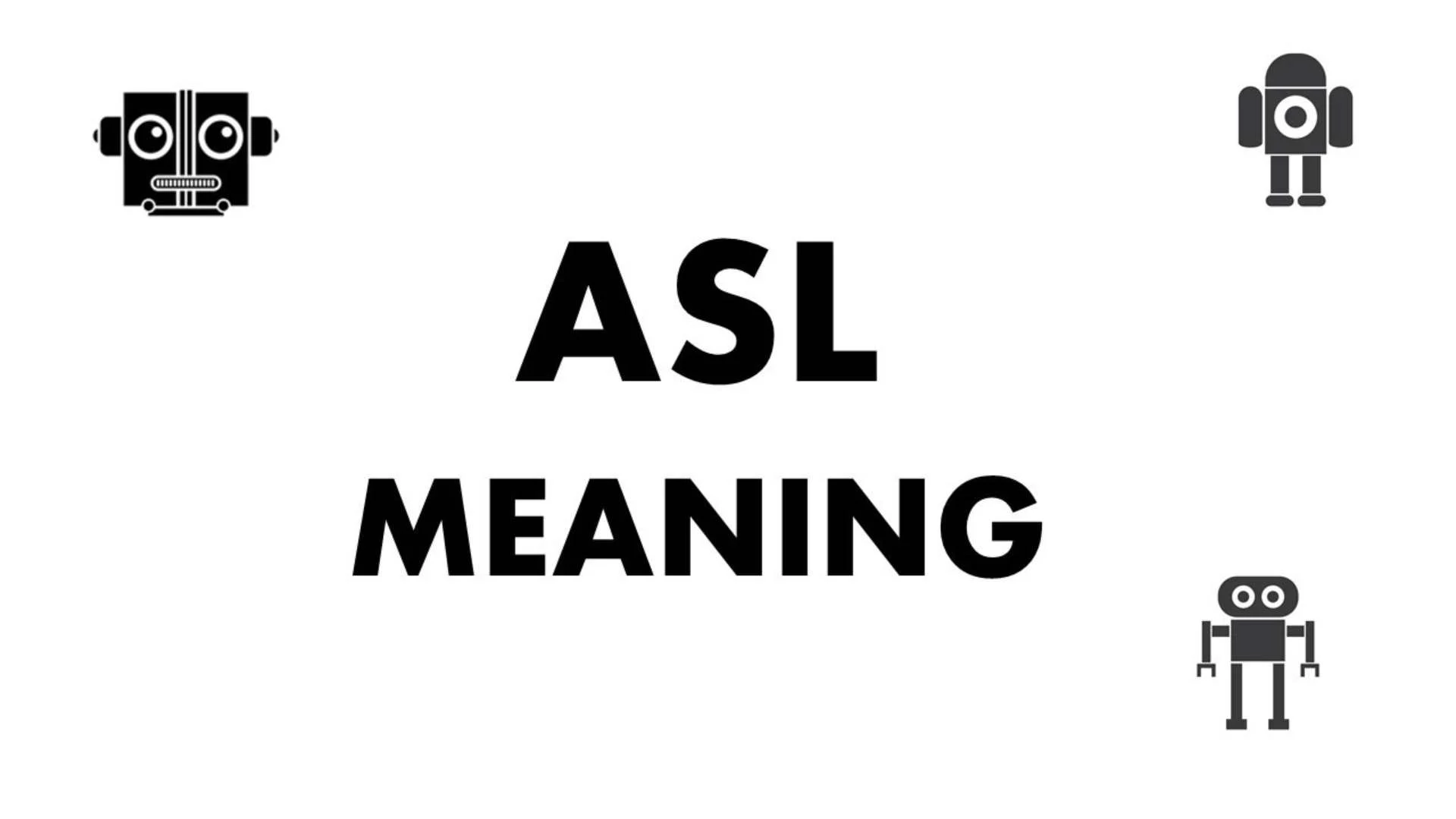If you’ve ever received a message with just three letters—“ASL?”—you might have paused, confused. Is it a slang term? A code? Something deeper?
In 2025, “ASL” still holds its roots in early online chat culture, but its meaning has evolved. Originally popularized in early internet chat rooms and platforms like AOL Instant Messenger, ASL stood for Age, Sex, Location. Today, however, its usage is far more layered—and sometimes completely different.
This article will uncover:
- The true definition of ASL
- Why ASL is trending again in 2025
- How it’s used in different contexts (formal, casual, Gen Z lingo, and more)
- Ten professional and polite alternatives you can use
- Examples of ASL usage in real conversation
- How to choose the right phrase based on tone, audience, and platform
Let’s decode this small acronym with big implications.
What Does “ASL” Mean in 2025?

At its core, ASL is an abbreviation. But depending on where and how it’s used, its meaning changes. Here are the three most recognized definitions:
1. ASL – Age, Sex, Location
This is the original meaning, widely used in online chat rooms during the early 2000s.
Example:
Stranger: “Hey, ASL?”
Reply: “19/F/NY”
Though it might seem outdated, this version of ASL still shows up occasionally—especially in retro or nostalgic contexts.
2. ASL – American Sign Language
In a formal or academic context, ASL refers to American Sign Language, the visual language used by the Deaf community in the U.S. and parts of Canada.
Example:
“I’m studying ASL as part of my linguistics major.”
With the rise of inclusivity and accessibility in 2025, this meaning has gained major visibility in tech and education.
3. ASL – As Hell (Slang)
This version of ASL is slang-based and popular among Gen Z and younger millennials on platforms like TikTok, Instagram, and X (formerly Twitter).
Here, “ASL” is used for emphasis, usually to replace “as hell” in sentences.
Example:
“I’m tired ASL right now.”
(Translation: I’m extremely tired.)
This casual use is all about expressive exaggeration—especially in short-form content and memes.
Why “ASL” Is Making a Comeback in 2025

The revival of 90s and early 2000s culture has brought many abbreviations like ASL back into the mainstream. But there’s more to it:
- Digital Minimalism: People prefer shorter texts and acronyms to express more with less.
- Platform Cross-Usage: ASL is used on TikTok differently than in academic circles, making it a multi-audience term.
- Ambiguity is Trendy: Many enjoy using language with double meanings for humor or irony.
Today, understanding ASL means being culturally literate online.
Is ASL Appropriate in Professional Settings?
In most cases—no.
Unless you’re referring to American Sign Language, using “ASL” in professional communication (like emails, reports, or workplace chats) may seem confusing or even unprofessional.
For example:
❌ “Can you give me your ASL?”
✅ “Could you please tell me a bit about yourself?”
The correct alternative depends on your intention—and your audience. Let’s look at better options.
Polite & Professional Alternatives to “ASL”

Here are 10 expert-crafted alternatives to “ASL” that convey similar messages but are more respectful, professional, or context-friendly.
1. “Can you tell me a bit about yourself?”
A warm, friendly phrase suitable for both formal and casual contexts.
✅ Example: “Before we start, could you tell me a bit about yourself?”
2. “Where are you from originally?”
A polite way to inquire about someone’s location.
✅ Example: “It’s always fun learning about new cultures. Where are you from originally?”
3. “Do you mind sharing your background?”
A great phrase to use in interviews or team onboarding.
✅ Example: “We’d love to hear more—do you mind sharing your background?”
4. “What’s your story?”
This casual yet deep question invites openness.
✅ Example: “I’d love to know more. What’s your story?”
5. “Could you introduce yourself briefly?”
Perfect for email threads, Zoom calls, or forums.
✅ Example: “Before we dive in, could you introduce yourself briefly?”
6. “Tell me about your journey so far.”
Ideal for conversational or motivational contexts.
✅ Example: “Your career sounds inspiring. Tell me about your journey so far.”
7. “Which part of the world are you in?”
Global-friendly and polite when asking for someone’s location.
✅ Example: “Working remotely is so exciting. Which part of the world are you in?”
8. “What do you prefer to be called?”
While not a direct replacement, this shows respect and inclusivity.
✅ Example: “Hi! Before we begin, what do you prefer to be called?”
9. “What are your pronouns?”
In inclusive settings, this matters as much as (or more than) age/gender.
✅ Example: “As part of introductions, what are your pronouns?”
10. “What brings you here today?”
Perfect for conversations on platforms or during virtual meetups.
✅ Example: “Welcome! What brings you here today?”
Tone, Context, and Audience: Why It Matters
Let’s break down how tone and context affect which phrase to use instead of “ASL”:
| Context | Recommended Phrase | Tone |
|---|---|---|
| Workplace Onboarding | “Could you introduce yourself briefly?” | Professional |
| Online Dating | “Tell me about yourself” | Friendly |
| Social Media (Casual DM) | “What’s your story?” | Casual |
| Diversity Training | “What are your pronouns?” | Inclusive |
| Global Team Call | “Which part of the world are you in?” | Neutral |
If you’re ever unsure, mirror the tone of the person you’re speaking with. Avoid slang like “ASL” unless you’re confident it fits the situation.
Examples of “ASL” in Sentences (By Context)
Below are 10 fully updated examples of ASL being used in real-life contexts across various tones:
1. (Slang):
“This coffee is strong ASL. I’m shaking 😂”
2. (Chatroom throwback):
“Whoa, this feels like 2005. ASL?”
3. (Deaf Community):
“My cousin is fluent in ASL. She’s an interpreter now.”
4. (Corporate email):
“We discourage the use of slang like ‘ASL’ in internal communications.”
5. (Humor):
“I said ‘ASL’ and they thought I was taking a linguistics class.”
6. (LinkedIn post):
“Learning ASL has been one of the most fulfilling things I’ve done this year.”
7. (Romantic conversation):
“ASL?”
“23/F/London. You?”
8. (Gaming Chat):
“Laggy ASL rn 💀 anyone else?”
9. (Gen Z tweet):
“I’m emotional ASL right now 😭 #MondayMood”
10. (Educational setting):
“Our curriculum now includes ASL to promote inclusivity and accessibility.”
Each use case demonstrates how context defines meaning. Misusing ASL can lead to misunderstandings or even unintentional disrespect—especially in global or professional communication.
Avoiding Common Mistakes When Using “ASL”
1. Don’t Assume Everyone Knows What It Means
Not everyone—especially across generations—knows what ASL means in slang.
2. Avoid in Emails or Professional Platforms
Unless referring to American Sign Language, skip ASL in formal writing.
3. Be Culturally Aware
ASL is an actual language tied to Deaf culture. Using it flippantly can be insensitive.
Conclusion: Be Clear, Be Respectful, Be Relevant
Language evolves—but clarity never goes out of style.
While ASL can mean “Age, Sex, Location”, “American Sign Language”, or even “As Hell”, you should always tailor your words to your audience and your purpose. Whether you’re messaging a friend or welcoming a new colleague, your tone speaks as loudly as your words.
If you want to sound professional, inclusive, or simply respectful—skip abbreviations like “ASL” unless they’re crystal clear in context. Instead, use one of the well-rounded alternatives we’ve outlined to keep your communication effective and engaging.

